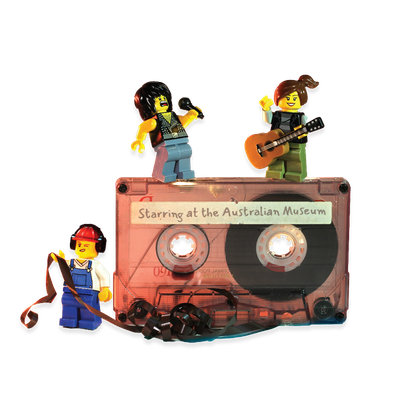Your search returned 102 results
By Page Type
By Tag
- All
- fish (966)
- blog (696)
- fishes of sydney harbour (401)
- First Nations (299)
- Blog (236)
- AMRI (169)
- archives (164)
- Eureka Prizes (146)
- Aboriginal and Torres Strait Islander (135)
- insect (126)
- Ichthyology (124)
- geoscience (109)
- minerals (102)
- climate change (99)
- podcast (94)
- Fish (91)
- Anthropology (89)
- International collections (80)
- Minerals Gallery (78)
- wildlife of sydney (78)
- Labridae (77)
- frog (74)
- gemstone (70)
- photography (66)
- history (64)
- Mollusca (60)
- gem (59)
- staff (59)
- Birds (56)
- Gems (56)
- Indonesia (56)
- education (56)
- shark (55)
- AMplify (54)
- people (53)
- earth sciences (50)
- exhibition (50)
- past exhibitions (50)
- Gobiidae (48)
- sustainability (46)
- Pomacentridae (45)
- Serranidae (44)
- lifelong learning (42)
- science (42)
- Earth and Environmental Science (41)
- Syngnathidae (41)
- Ancient Egypt (40)
- Bali (40)
- bird (40)
- dangerous australians (40)
-
Object and species identification
https://australian.museum/learn/species-identification/Curious about objects or specimens you've discovered? Identify Australasian animal life, geology and cultural objects through our Ask an Expert enquiry form, common enquiries webpages or discover species with our interactive Identification Key.
-
Earth: Rocks and minerals
https://australian.museum/learn/teachers/at-the-museum/earth-rocks-minerals/Explore a range of rocks and minerals in this hands-on Museum educator-led program.
-
Opal
https://australian.museum/learn/minerals/gemstones/opal/Facts about Opal.
-
Crystallography
https://australian.museum/learn/minerals/what-are-minerals/crystallography/Minerals can be identified by the shape of their crystals: called crystallography. External crystallography measures the outside properties of crystals such as length of crystal surfaces and the angles between these surfaces.
-
Azurite on Cerussite
https://australian.museum/learn/minerals/mineral-factsheets/azurite-on-cerussite/This beautiful specimen contains the largest Broken Hill azurite crystal in our collection.
-
Molybdenite on quartz
https://australian.museum/learn/minerals/mineral-factsheets/molybdenite-on-quartz/With its large, curved, silvery, flexible and metallic crystal flakes scattered over quartz crystals in an aesthetic arrangement, this is the best molybdenite (molybdenum sulphide) specimen of its type in the world.
-
Maitland Bar Gold Nugget
https://australian.museum/learn/minerals/mineral-factsheets/maitland-bar-gold-nugget/The Maitland Bar gold nugget has a value far beyond its gold content.
-
Calcite Crystals
https://australian.museum/learn/minerals/mineral-factsheets/calcite-crystals/This attractive and impressive group of large and transparent scalenohedral or ‘dog-tooth’ calcite crystals is from a pool in Cliefden Caves.
-
Gold on Quartz
https://australian.museum/learn/minerals/mineral-factsheets/gold-on-quartz/Gold always has instant appeal, and this photogenic specimen certainly attracts attention.
-
Opal ‘Pineapple’
https://australian.museum/learn/minerals/mineral-factsheets/opal-pineapple/This opal ‘pineapple’ has nothing to do with the fruit – the term is only a visual description. The opal is made of silicon dioxide with water.
-
Discover more
2025 Australian Geographic Nature Photographer of the Year
Special exhibition
Free entry
Now open -
Discover more
Unfinished Business
Special exhibition
Free entry
Now open -
Discover more
Wansolmoana
Permanent exhibition
Free entry
Open daily -
Find out more
Burra
Permanent kids learning space
Free entry
10am - 4.30pm![]()
-
Discover more
Minerals
Permanent exhibition
Free entry
Open daily![]()




